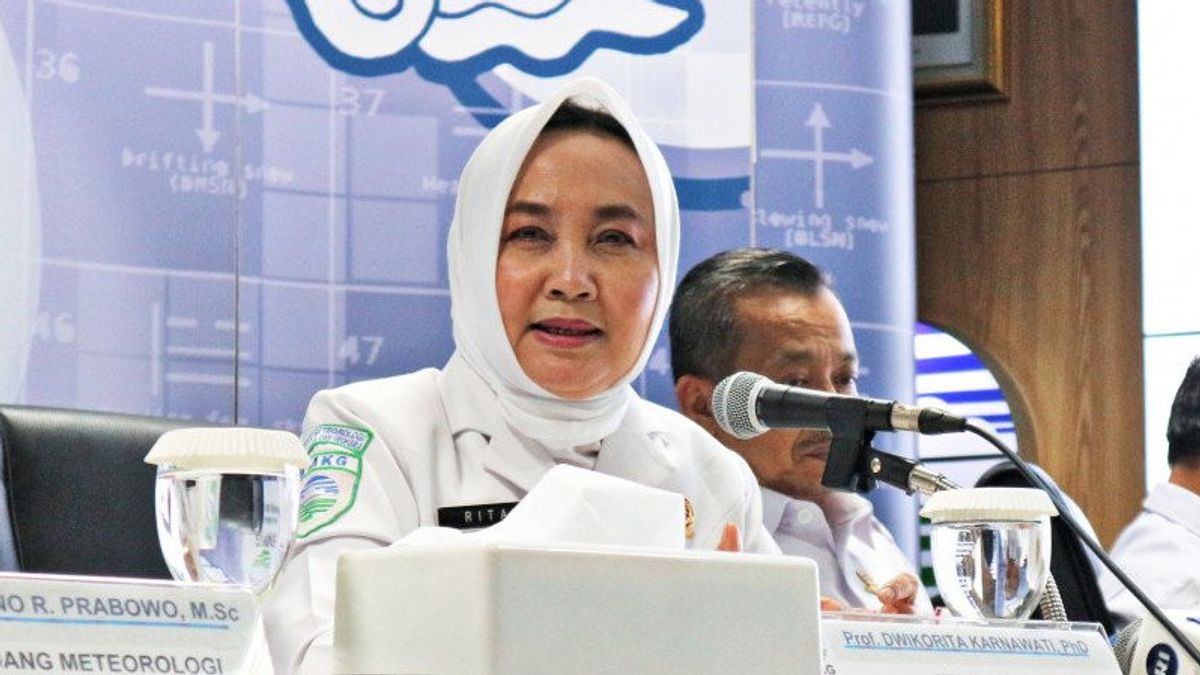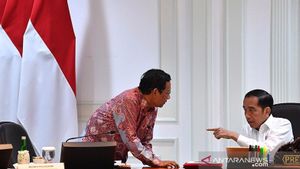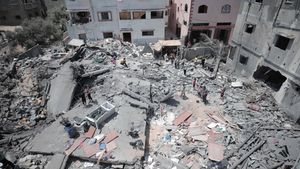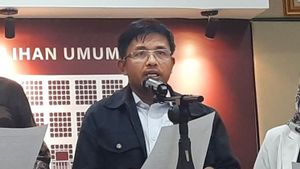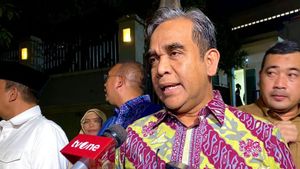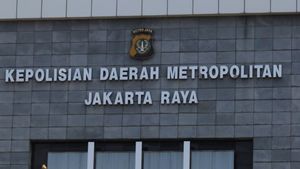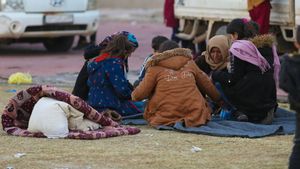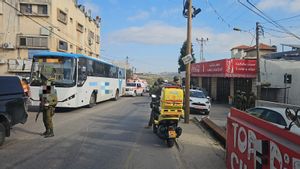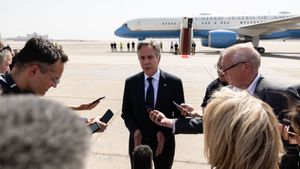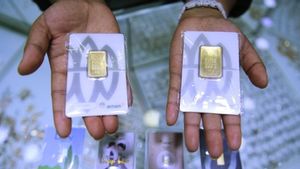JAKARTA - Head of the Meteorology, Climatology and Geophysics Agency (BMKG) Dwikorita Karnawati said there was a lot of application-based weather information on smart devices (smartphones) whose forecasts often missed because the data was not sourced from the BMKG.
"Not a few people think that the data and information provided come from the BMKG because it displays information about the weather in Indonesia, even though after tracing the data and information it comes from institutions outside Indonesia, sometimes it is less accurate," said Dwikorita as quoted by ANTARA, Wednesday, October 18.
He emphasized that the weather forecast in Indonesian territory was officially issued by the BMKG and could be used as a benchmark for people to carry out their activities.
BMKG, he said, is the only official Indonesian institution authorized to provide weather forecasts for the public in Indonesia, in accordance with Law No. 31 of 2009, on Meteorology, Climatology and Geophysics.
Dwikorita conveyed that BMKG data represented conditions in Indonesia taken from hundreds of observation stations or thousands of observation equipment spread throughout Indonesia.
"Sistemphrosing and the modeling used have also been set up according to the uniqueness of weather conditions and dynamics in Indonesia, so that the results can be much more precise and accurate," he said.
The Deputy for Meteorology of BMKG, Guswanto, added that the low level of accuracy of weather forecasts in non-government applications is because the forecast is made with global data which is processed with mathematical modeling and then downscales specifically for Indonesian territory.
The global data, he said, is weather data originating from countries around the world that are members of the World Meteorological Organization (WMO), including BMKG which always sends data to WMO automatically through satellite communication networks, to be compiled into global data.
"However, it should be understood that the data and information sent by the BMKG are limited to data from 59 observation stations in Indonesia, the majority of which come from Java and Sumatra," he explained.
The limited data, he said, was of course unable to represent weather and climate conditions throughout Indonesia.
اقرأ أيضا:
Head of the BMKG Public Meteorology Center, Andri Ramdhani, said that BMKG has thousands of observation points needed for assimilation and validation of weather forecast models throughout Indonesia.
The data was then processed by monitoring (observers) and Forecasters (forcasters) before finally being officially distributed by BMKG through various communication channels owned, one of which is through a smartphone application called infoBMKG.
Andri said the modeling method for the weather forecast carried out by BMKG was to integrate data from hundreds of observation points into mathematical modeling.
"Although this method is almost the same as the methods applied by other institutions, in terms of BMKG data, it has more complete data to assimilate or validate weather forecast models," he explained.
As is known, on Google Play and the App Store, there are many weather forecast applications available, in addition to official applications from the Indonesian government "BMKG Info".
The English, Chinese, Japanese, Arabic, and French versions are automatically generated by the AI. So there may still be inaccuracies in translating, please always see Indonesian as our main language. (system supported by DigitalSiber.id)
